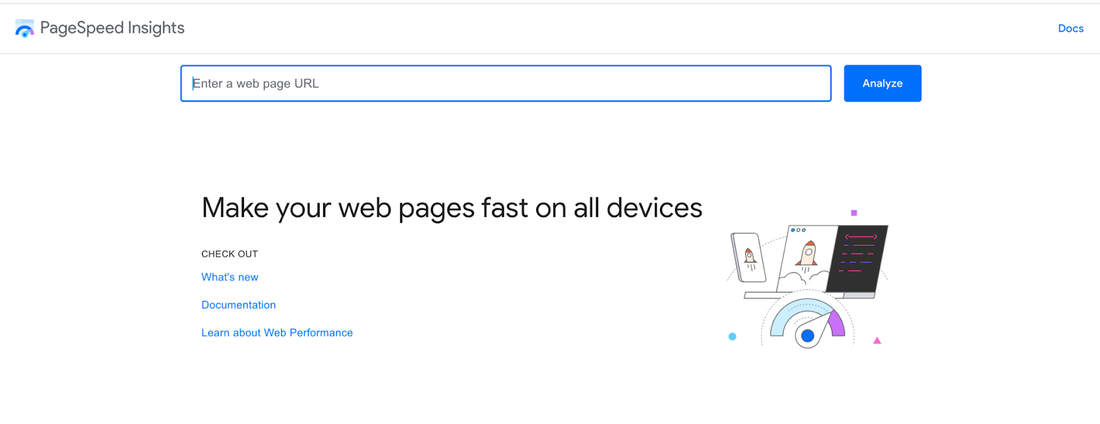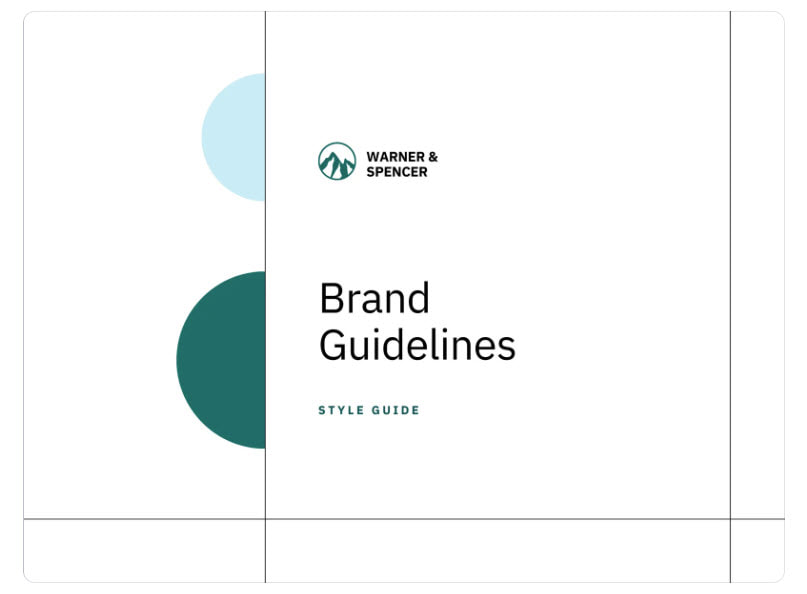|
It’s important to know what not to do as you grow your brand and business. While digital marketing includes many channels and tactics, that doesn’t mean anything goes. The biggest digital marketing mistakes ultimately boil down to these eight failures, including failure to engage in email marketing and the lack of a clear strategy. No need to worry, though; forewarned is forearmed! Here’s how to avoid the most common digital marketing mistakes. Common digital marketing mistakes and how to avoid them There are many ways to make these individual errors, but the key failure ultimately comes down to one of these overarching digital marketing mistakes. Failure to brand A clear brand image is crucial to every aspect of digital marketing. You need to understand your business and your audience to communicate persuasively. Steer clear of these top digital marketing mistakes with strong, consistent branding. Inconsistent brand attributes Imagine having a friend who changes their personality every time you meet them. Confusing, right? That’s exactly how your audience feels when your brand attributes are inconsistent. Your brand’s voice, style, and values should be consistent across all digital platforms. Build a strong brand to foster recognition, trust, and loyalty. Failure to identify your value Promoting your brand doesn’t mean bragging about your business. It’s about showcasing what sets you apart from your competitors. Use social media, email, and SEO-driven content marketing to spread the word, underscoring your unique selling proposition. What about your offering will make it attractive to a target audience? Why should they want to do business with you? Lack of transparency In the digital age, customers value transparency more than ever. Seventy-two percent of consumers consider transparency important, and two-thirds say they would switch brands over a question of detailed data. Be open and honest about your business practices. Share behind-the-scenes glimpses of your operations, involve your audience in decision-making, and be upfront about any issues or mistakes. Failure to strategize Why do most digital marketers fail? They focus on individual actions rather than developing a full digital marketing strategy. These digital marketing mistakes can derail efforts from the beginning. Absence of clear goals Without clear objectives, you risk doing a lot of work for little payoff. Know what you want to achieve long-term and the steps you need to take. Set SMART marketing goals that are specific, measurable, achievable, relevant, and time-bound. Then, you can create a strategy to realize them. Disjointed strategy Many people forget to integrate marketing efforts across channels. This disjointed approach can lead to inconsistent messaging and missed opportunities. Instead, develop a holistic strategy for a unified audience experience between all your channels. Improper budget A well-organized budget is essential. Without one, it’s easy to spend more than you expect and or waste money on low-yield activities. Note your investments of time as well as money. There’s a lot of free content marketing you can do, but make sure it appropriately rewards the time spent. No measurement of ROI Speaking of ROI, tracking it allows you to assess the effectiveness of your marketing and tweak your strategy. Pay attention to ROI metrics for digital campaigns. If popularity and web activity don’t translate to actual sales, look into the problem. Total self-reliance Sometimes, strategic thinking requires you to identify the areas where you need help. Seek expert assistance when needed. You can hire professionals or take advantage of the support resources offered by the platforms you use. Failure to leverage email Email marketing is a powerful tool in the arsenal of any business. It’s a direct line of communication with your audience and a chance to engage them, convert them, and build lasting relationships. It also nets businesses an average ROI of $36 for every dollar spent, making it a crucial element of your marketing playbook. Make your email marketing strategy a priority, and avoid these related email marketing mistakes. No collection of email addresses Email addresses are golden tickets to your audience’s inbox. Set yourself up with email capture tools to collect them. People are often willing to share their email addresses in exchange for something valuable. This could be an informative newsletter, a discount code, or exclusive access to content. Poor personalization techniques Don’t send the same message to everyone. People want to feel seen and understood. Subscribers will end up leaving brands that don’t offer personalized experiences. Address people by name, and segment your email list based on demographics, purchasing behavior, and engagement levels. Spam Sending too many irrelevant emails can annoy your audience and tarnish your brand’s reputation. It’s a surefire way to get your emails marked as spam, which harms email deliverability, and might cause your unsubscribe rate to spike. Respect your audience’s inbox. Only send when you have something valuable to share. It’s also a good idea to let subscribers know how often to expect emails from you upfront, possibly in your welcome email. Failure to optimize websites Your website is the virtual storefront of your business. It’s where potential customers get a first impression, learn about your products or services, and buy them. Avoid these top digital marketing mistakes for your website. Slow speed No one likes to wait for a slow website to load. Moreover, slow speed can harm your search engine optimization, pushing your website down in search results. Optimize your website for speed. Consider using tools like Google PageSpeed Insights to identify and fix speed issues. Google PageSpeed Insights is easy to use. Just type in your website address, and learn how to improve speed. Image source: PageSpeed Insights No attention to SEO Search engine optimization (SEO) involves making your website and content attractive to search engines, helping your site appear in relevant search results. Why is this so important? Over 25% of people click on the first result of their Google searches, and the click-through rate drops as you move down the page. You need to optimize for local search if you’re a local business. Include location-specific keywords in your website content, ensure your contact information is current and consistent, and create a Google Business Profile. Poor mobile experience More than a third of U.S. internet usage is conducted on a mobile device. If your website isn’t optimized for mobile, you risk alienating a significant portion of your audience. Failure to leverage organic posts Content marketing is a powerful way to connect with your audience, build interest in your brand, and drive conversions. Take advantage of audience-building opportunities for social media, blogs, and anything else you produce. Watch out for these social media mistakes and other potential pitfalls. Poor choice of social media platform Not every brand or every piece of content is suitable for every channel, and the wrong platform can limit your reach and impact. Learn where your audience spends their time online and prioritize those platforms. No blog or video content Blogs attract new visitors and boost SEO. Videos are visually appealing, easy to consume, and highly shareable. Ninety-one percent of consumers want to see more videos from brands. Start blogging and creating video content. You’ll integrate keywords into your website and create helpful resources for prospects. Lack of free content While charging for premium content is okay, putting too much of your content behind a paywall can discourage potential customers. Use free and gated content to promote your business and expertise while creating demand for paid material. Erratic posting schedule Don’t play hide and seek with your audience. To keep your audience engaged, maintain a regular posting schedule for your blog and social media. Consistency builds anticipation and keeps your audience coming back for more. Failure to convert Conversions differentiate brand popularity from brand success, turning audience members into customers or subscribers. Your content might fail to convert for one of these common reasons. Poor content conversion strategies Create content that speaks directly to your audience and makes them want more from your brand — more purchases, more information, and more engagement. Provide an easy next step in the customer journey with clear calls to action. CTAs prompt the viewer to take a desired action, like making a purchase or signing up for a newsletter. Make your CTA stand out visually, and use action-oriented language. Incorporate an abandoned cart recovery strategy, too. Customers often add items to their shopping carts but leave without completing the purchase, and according to Statista, North American customers abandon almost 80% of online carts. Consider sending reminder emails, offering discounts to complete the purchase, and making the checkout process simple. No lead validation Lead validation involves verifying the quality or relevance of leads to ensure they’re worth pursuing. Your lead validation process could involve qualifying questions, lead scoring, or follow-up communication. Identifying high-quality leads allows you to maximize your resources and increase your chances of conversion. Lack of promotions Discounts or sales promotions can help drive purchases, attract new customers, and boost customer loyalty. They incentivize customers to commit now instead of dragging out the process. You should also announce limited-time or new offerings. Spread the word across your channels and post major announcements on your website. When you scroll down the webpage for local restaurant Travail, you find a seasonal promotion such as this announcement of holiday meal kits. Image source: Travail Failure to engage and serve consumers Customer engagement turns one-time buyers into loyal customers and brand advocates. These digital marketing mistakes stand in the way. Mediocre customer service Excellent customer service is not just about solving problems; it’s about creating a positive customer experience at every touchpoint. Provide high-quality support all over. Your customer service should be responsive, empathetic, and solution-oriented. You can use customer feedback to continuously improve the aspects that matter most to your clients. Prioritization of customer acquisition over retention The “statistic” that it costs five times as much to acquire a new customer as to keep an old one may have dubious origins, but there’s no doubt that customer retention is crucial to long-term success. Strike a balance between customer acquisition and retention. Develop strategies to keep your current customers engaged and satisfied, such as loyalty programs and personalized emails. Ignored comments or messages It’s crucial to engage with people who comment on your blog or send direct messages to your business. Show appreciation for all types of feedback (positive or negative), and address any concerns or complaints in a thoughtful, respectful manner. No social proof Positive customer testimonials and reviews do wonders for your brand’s reputation. If you’re not leveraging these happy customers, you’re missing out on a powerful form of social proof that can persuade people to choose your business. Actively ask for testimonials and showcase positive reviews across your digital channels. You should encourage customer referrals and reward them if you can afford it. Ask clients to spread the word about your business, and remember to say thank you when they come through. Failure to network With digital marketing, your network can be your net worth. Building connections with other professionals and businesses in your industry unlocks growth opportunities you might not have imagined. Lack of earned media Media coverage or publicity can significantly boost your brand awareness. If you’re not actively seeking this, you’re missing out on an opportunity to reach a wider audience. Develop a robust earned media strategy. This could involve press releases, media pitches, or events attracting media attention. No guest spots Writing content for other platforms, or guest blogging, is a fantastic way to expand your audience and establish authority in your field. Just make sure your content provides value to the regular audience while showcasing your expertise. The same goes for giving a speech at conferences and other events. Public speaking can be intimidating, but these are important networking and thought leadership opportunities. Try starting small, perhaps with a short presentation at a local event, and work your way up from there. Another way to extend your reach is to find and join online forums relevant to your industry. These can be goldmines of valuable insights and community-building opportunities. Participate actively by asking questions, sharing insights, and offering help. These platforms are about community, so focus on building relationships rather than just promoting your brand. No affiliate marketing Affiliate marketing strategies can extend your brand’s reach and generate sales. If you’re not leveraging these, you’re leaving money on the table. Consider building an affiliate program. Find affiliates who align with your brand values and have an audience potentially interested in your product or service. How to avoid making digital marketing mistakes Now that you know where your digital marketing strategy could falter without proper attention and effort, it’s time to focus on how to avoid those challenges. These best practices will help you avoid common digital marketing mistakes. Create a brand guide Your brand is more than just your logo or tagline; it’s the entire experience your customers have with your business. Create a clear, consistent experience by developing a brand guide. Your brand guide should outline your mission, values, personality, and visual elements. Give it to anyone creating marketing materials for your brand. Canva Pro offers brand templates to help you start building your brand identity through style and content guidelines. Image source: Canva Create customer avatars and define your audience Targeting everyone is the same as targeting no one. Don’t waste time and resources on targeting the wrong people or an overly generic audience. Instead, create customer avatars. Include information about their demographics, interests, challenges, and motivations. Use these personas to guide your marketing strategy and ensure you reach the right people with the right message. Address your audience’s pain points Your audience is looking for solutions to their problems. If your marketing doesn’t directly address these pain points, you risk losing potential customers to competitors who do. Make sure you understand your audience’s challenges and how your product or service can solve them. Highlight these solutions in your marketing messages. Emphasize SEO and keyword research SEO makes it easier for potential customers to find you. Incorporate best practices into the content you publish online. This should involve optimizing your website’s structure and content, building quality backlinks, and monitoring your performance. One critical element of SEO is keyword research, which can help you understand what your audience is searching for so you can create content that meets their needs. Use tools like Google Keyword Planner to find terms related to your industry and incorporate them into your content. Be thrifty with paid advertising Paid ads can be a powerful way to reach a larger audience. However, without a strategic approach, you might end up spending a lot of money with little to show for it. Set a realistic budget for your paid ads and stick to it. Target your ad campaigns by setting demographic and interest parameters to reach your intended audience. Monitor your results closely. This way, you can adjust your strategy and get the most bang for your buck. Be patient and realistic in your expectations Digital marketing is not a sprint; it’s a marathon. If you expect instant results, you may become frustrated and give up too soon. Keep track of your progress and adjust your strategy as needed. Set realistic time frames to achieve key goals. Create a content calendar A content calendar is a place to plan all of your content: blogs, emails, social media, and anything else you produce. Create and schedule material that aligns with your overall marketing strategy across all touchpoints. Incorporate social proof in your content Social proof, such as case studies and success stories, persuades potential customers that your product or service is worth their investment. If you’re not leveraging these, you’re missing out on a powerful marketing tool. Actively seek out success stories from your customers. Share these stories on your website, social media, and other marketing materials. This will show potential customers the value of your product or service and build trust in your brand. Provide value and focus on quality Provide valuable content to your audience across all channels. Identify topics that interest your audience and focus material accordingly. Quality trumps quantity. It’s better to have a few pieces of great content than a lot of poor-quality content, which can hurt your brand’s credibility in the long run. Digital marketing resources and tools Digital marketing agencies and freelancers are not always a realistic part of every business’s budget, but the right tools can help you avoid digital marketing mistakes and add a professional touch to campaigns. Consider adding these tools to your kit:
In addition to asking what some marketing mistakes are, people often want to know the most common challenges that get in the way of marketing success. What are improper marketing strategies? Improper marketing strategies end up doing more harm than good to your brand. Steer clear of major campaign failures by adopting digital marketing best practices. What are the top marketing mistakes small businesses make? The biggest marketing challenge that small businesses face is a lack of resources, and the most common mistake is a lack of clear marketing strategy and objectives. What is a common mistake in content marketing? Poor targeting is a common issue. Business-to-business and business-to-consumer marketers cite different but related challenges. B2B marketers often struggle to create content for different stages of the buyer’s journey. B2C marketers struggle to appeal to different audiences. Evaluate your digital marketing Navigating the world of digital marketing can be tricky. By knowing the digital marketing mistakes to avoid, you can continually improve your marketing with proven best practices. Now that you have a clearer idea of what can go wrong, it’s time to take a look at your marketing playbook. If you’re not due to conduct a full marketing audit, try to identify one area from the above list where there’s room to improve and one actionable step you can take to improve it. Remember, everybody makes mistakes, and you will, too. That’s okay. The important thing is to address them and learn for the future. Source: https://www.constantcontact.com
0 Comments
Leave a Reply. |
Membership is open to businesses and organizations interested in increasing visibility and brand awareness in Westchester County and surrounding areas.
Archives
May 2024
Categories
All
|





 RSS Feed
RSS Feed